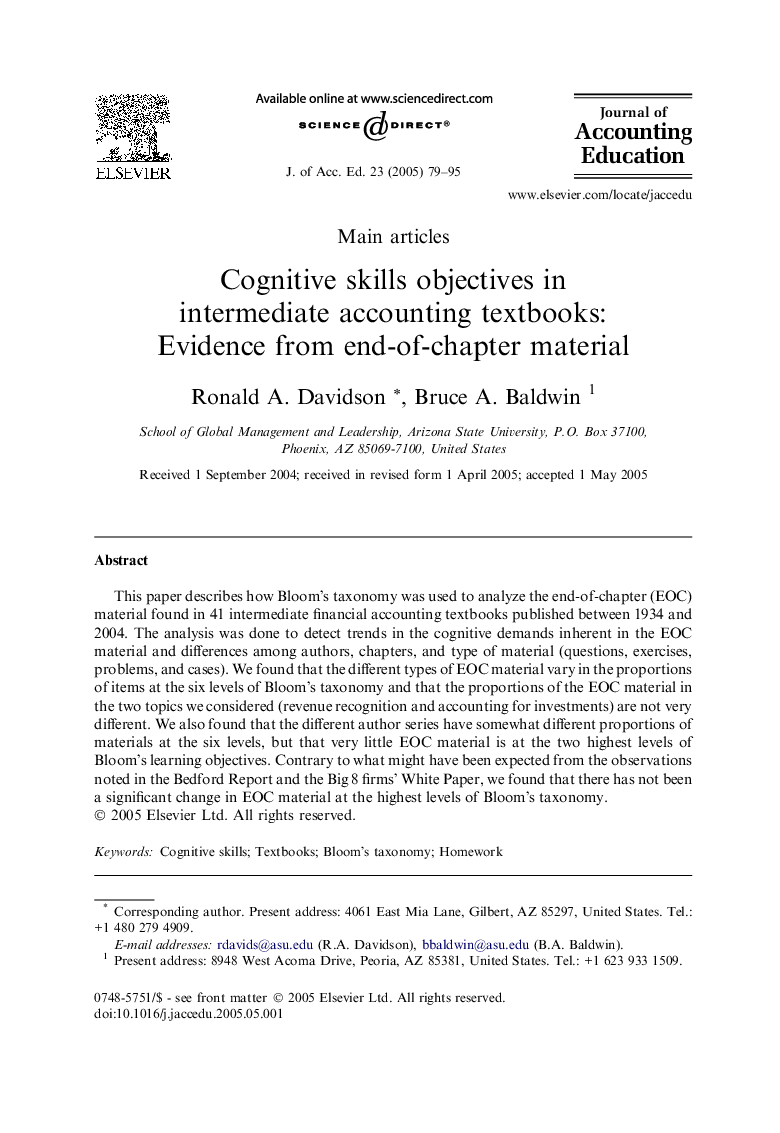| Article ID | Journal | Published Year | Pages | File Type |
|---|---|---|---|---|
| 10314287 | Journal of Accounting Education | 2005 | 17 Pages |
Abstract
This paper describes how Bloom's taxonomy was used to analyze the end-of-chapter (EOC) material found in 41 intermediate financial accounting textbooks published between 1934 and 2004. The analysis was done to detect trends in the cognitive demands inherent in the EOC material and differences among authors, chapters, and type of material (questions, exercises, problems, and cases). We found that the different types of EOC material vary in the proportions of items at the six levels of Bloom's taxonomy and that the proportions of the EOC material in the two topics we considered (revenue recognition and accounting for investments) are not very different. We also found that the different author series have somewhat different proportions of materials at the six levels, but that very little EOC material is at the two highest levels of Bloom's learning objectives. Contrary to what might have been expected from the observations noted in the Bedford Report and the Big 8 firms' White Paper, we found that there has not been a significant change in EOC material at the highest levels of Bloom's taxonomy.
Related Topics
Social Sciences and Humanities
Business, Management and Accounting
Accounting
Authors
Ronald A. Davidson, Bruce A. Baldwin,
